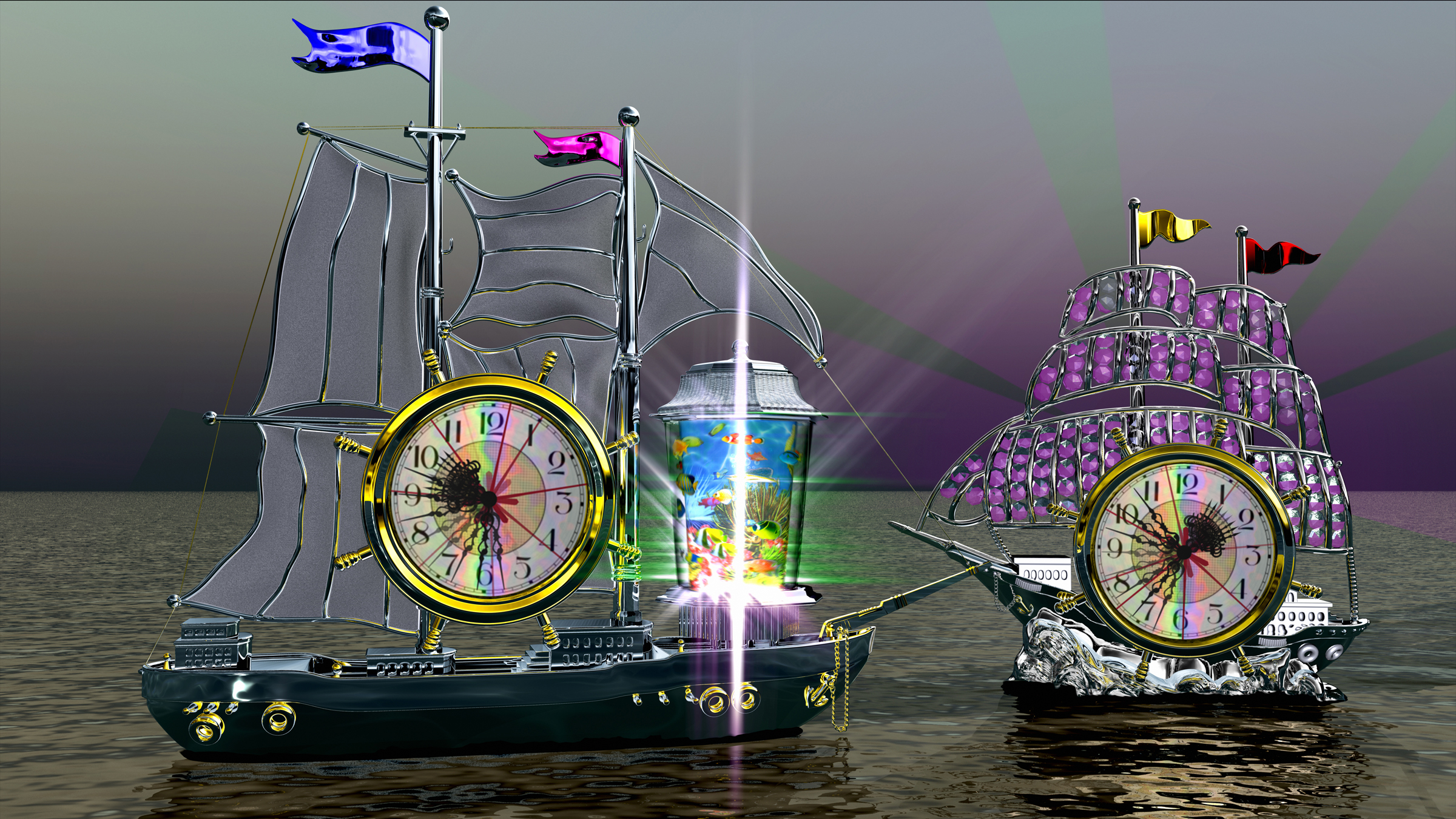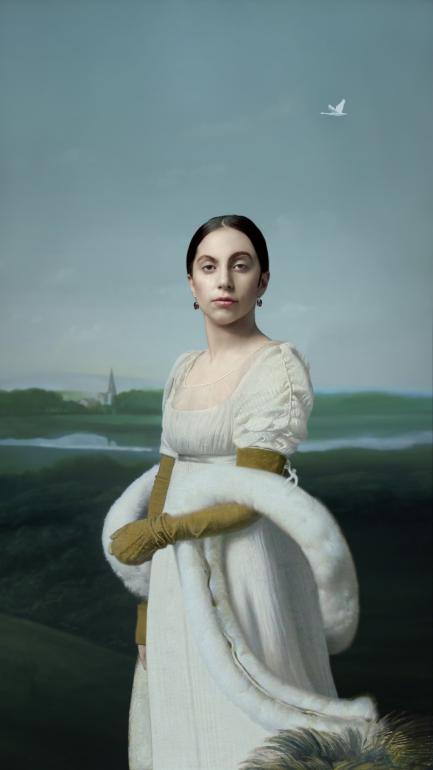“Days of Endless Time” Opens at the Hirshhorn
In a world conditioned by the frantic, 24/7 flow of information, some moving-image artists are responding with works that emphasize slower, more meditative forms of perception. “Days of Endless Time,” opening Oct. 16 at the Smithsonian’s Hirshhorn Museum and Sculpture Garden, presents installations that suspend or attenuate time or evoke a sense of timelessness. Part of the museum’s yearlong 40th anniversary celebration, it will be on view through April 12.
“Video and film are cornerstones of the art of our time,” said Melissa Chiu, the museum’s new director. “As the Hirshhorn enters its next decade, moving-image art remains an important focus.”
Located in the newly installed galleries of the Hirshhorn’s second floor, “Days of Endless Time” features 14 works by 13 international artists: Eija-Liisa Ahtila, David Claerbout, Hans-Peter Feldmann, Flatform, Douglas Gordon, Sigalit Landau, Hans Op de Beeck, Su-Mei Tse, Guido van der Werve, Siebren Versteeg, Clemens von Wedemeyer, Matthew Weinstein and Robert Wilson. Recurring themes include escape, solitude, memory, enchantment and the thrall of nature. The exhibition builds on the legacy of the museum’s previous groundbreaking exhibitions such as “The Cinema Effect: Illusion, Reality, and the Moving Image” and “Visual Music,” as well as its Black Box series.
Four installations in “Days of Endless Time” are drawn from the museum’s permanent collection, including an important recent acquisition by Ahtila. This will also be the American debut of Clemens von Wedemeyer’s “Afterimage” (2013), newly commissioned for MAXXI (National Museum of XXI Century Arts) in Rome. Produced using point-cloud-imaging software and panning camera work that navigates a Cinecittà warehouse filled with sculptures used as props in old films, the 210-degree projection leads viewers to virtually traverse the material past.
The intersection between artist and landscape is emphasized in several performance-based works. Van der Werve’s “Nummer Negen (#9) The Day I Didn’t Turn with the World” (2007) is a time-lapse video composed of still photographs that chronicles an extreme act of endurance in which the artist stood at the North Pole for 24 hours and turned slowly against the rotation of the Earth. In “L’Echo” (2003), part of Tse’s exhibition that won the Golden Lion at the Venice Biennale in 2003, the artist, a classically trained cellist, plays her instrument facing the Swiss Alps. The lustrous sounds echo off the nearby peaks, capturing the grandeur of the space before her and evoking a contemporary version of the sublime. In “DeadSee” (2005), Landau’s naked body lies intertwined with a floating spiral of watermelons, some of which have been broken open. The gashed fruit may be read as a series of wounds that unspools on the preternaturally green waters of the Dead Sea.
Several works employ technology to escape the confines of everyday space and time to arrive at new visual experiences of nature. Eija-Liisa Ahtila’s six-channel projection “Horizontal” (2011) challenges the notion of a singular vantage point by presenting a towering spruce tree in a series of adjacent slices, the result of a system of platforms and camera lenses situated at various heights. Flatform’s “Cannot Be Anything Against the Wind” (2010) combines multiple tracking shots of the landscape into a single synthetic view whose parts slip fluidly past one another. For “Travel” (1996–2013), David Claerbout edited outdoor footage shot over a period of 17 years into a seamless, imaginary cinematic glide.
The continuity of moving-image art with folk, fine and cinematic art forms is emphasized in works such as Feldmann’s “Shadowplay” (2002–09). The only non-video generated work in the exhibition, the installation uses lamps to project shadows of rotating displays of small found objects, casting silhouettes reminiscent of those in Scherenschnitte, the traditional Swiss-German handicraft of papercutting. In Matthew Weinstein’s “Cruising 1980” (2010), two meticulously crafted digital recreations of kitschy mantel clocks in the form of sailing vessels glide toward one another. In light of the title’s reference to a feature film whose controversial depiction of gay nightlife in pre-AIDS Manhattan became a cause célèbre, the passing of the two ships functions as a wry meditation on mortality, nostalgia and desire.
“Days of Endless Time” is co-organized by curator Kelly Gordon and assistant curator Mika Yoshitake. The exhibition is made possible in part by support from Janine and J. Tomilson Hill, Kitty and Tom Stoner, and Ginny Williams in honor of Kerry Brougher. Additional funding is provided by the Holenia Trust and Shinola Detroit.
A second exhibition, “At the Hub of Things,” also opens Oct. 16 as part of the 40th anniversary. The thematically arranged installation of art from the past 75 years is installed in the newly renovated third-floor galleries.
Related Publication
The Hirshhorn is pleased to collaborate with Lapham’s Quarterly on its fall 2014 issue, Time. The magazine, which serves as the companion publication to “Days of Endless Time,” includes a broad range of writing related to the focus of the exhibition, as well as images from many of the installations on view.
Related Public Programs
A series of public programs complements the exhibition.
About the Hirshhorn
The Hirshhorn Museum and Sculpture Garden, the Smithsonian Institution’s museum of international modern and contemporary art, has nearly 12,000 paintings, sculptures, photographs, mixed-media installations, works on paper and new media works in its collection. The Hirshhorn presents diverse exhibitions and offers an array of public programs that explore modern and contemporary art.
Located at Independence Avenue and Seventh Street S.W., the museum is open daily from 10 a.m. to 5:30 p.m. (closed Dec. 25). Admission to the galleries and special programs is free. For more information about exhibitions and events, visit hirshhorn.si.edu. Follow the Hirshhorn on Facebook at facebook.com/hirshhorn, on Twitter at twitter.com/hirshhorn, on Tumblr at hirshhorn.tumblr.com and on Instagram at instagram.com/hirshhorn. Or sign up for the museum’s eBlasts at hirshhorn.si.edu/collection/social-media. To request accessibility services, contact Kristy Maruca at marucak@si.edu or (202) 633-2796, preferably two weeks in advance.
# # #
SI-446-2014






